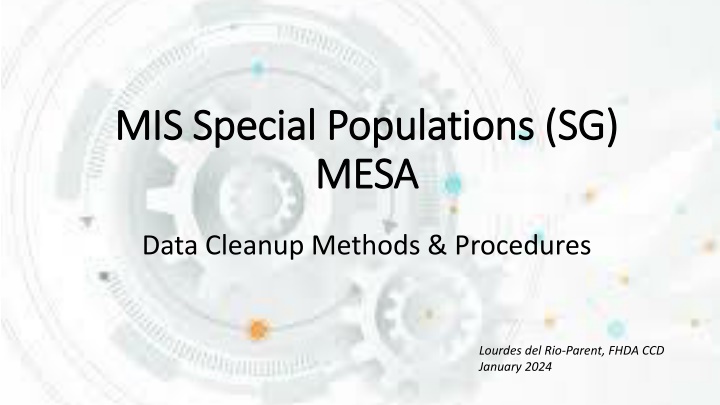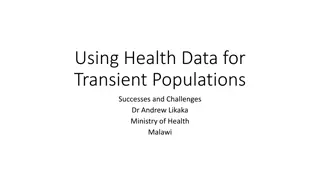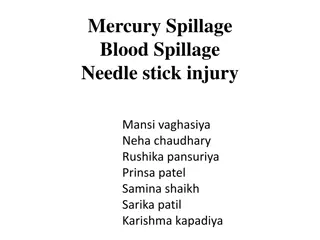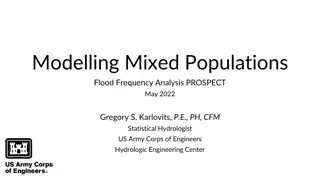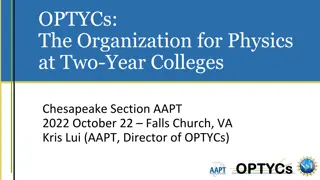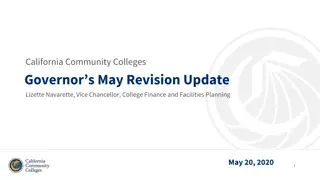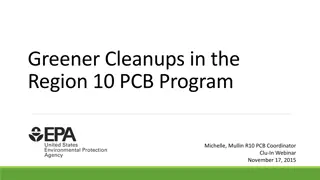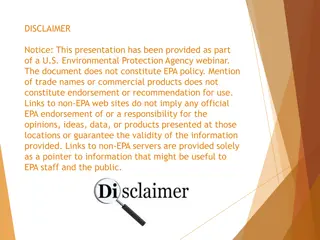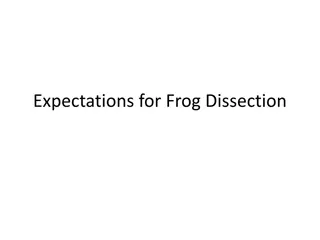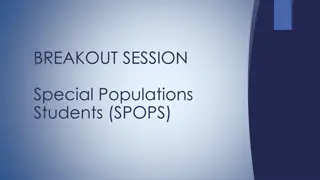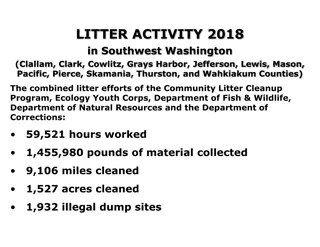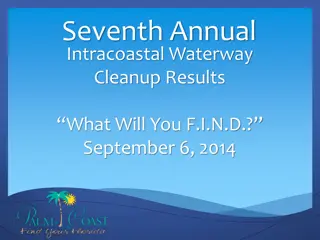Data Cleanup Methods & Procedures for Special Populations in Community Colleges
This content discusses the data cleanup methods and procedures related to special populations in community colleges, including reports, dependencies, and student enrollment. It covers various reports required by California Community Colleges Chancellors Office and FHDA, highlighting the importance of accurate data collection for programs like MESA, EOPS, and CalWORKs. The text files identify colleges, academic periods, student IDs, and special population statuses. Additionally, it emphasizes the necessity of confirming student participation data before submitting it for reporting.
Download Presentation

Please find below an Image/Link to download the presentation.
The content on the website is provided AS IS for your information and personal use only. It may not be sold, licensed, or shared on other websites without obtaining consent from the author.If you encounter any issues during the download, it is possible that the publisher has removed the file from their server.
You are allowed to download the files provided on this website for personal or commercial use, subject to the condition that they are used lawfully. All files are the property of their respective owners.
The content on the website is provided AS IS for your information and personal use only. It may not be sold, licensed, or shared on other websites without obtaining consent from the author.
E N D
Presentation Transcript
MIS Special Populations (SG) MIS Special Populations (SG) MESA MESA Data Cleanup Methods & Procedures Lourdes del Rio-Parent, FHDA CCD January 2024
California Community Colleges Chancellors Office MIS Reports DSPS (SD) CalWORKs (CW/SC) EOPS (SD) Special Pop (SG) Prior Learning (SY) VTEA/CTE (SV) Student Basic (SB) Success-3SP (SS) Fin Aid (SF/FA) Courses (CB) Acad Awards (SP) Sections (XB) Placement (SL) Sessions (XF) Academic Calendar (CC) Class Enrollment (SX) Faculty Assignment (XF) Assessment (SA) Employee Assignment (EJ) Employee Demographics (EB) Notes Overlap shows dependency between reports. A version of the employee demographic report (EB) is used for full and part-time faculty in the quarterly reports. Blue identifies quarterly reports; orange, annual reports.
FHDA MIS SG Special Populations, Dependencies At FHDA, most special population group students need to also show registration by census date. Student Basic (SB) Special Pop (SG) Class Enrollment (SX) Notes Overlap shows dependency between reports.
MIS SG Special Populations, Domain The report is a text file, which, among other things, identifies the college, the academic period, student ID and status for each special population group, including MESA status. The identifiers (college, term, student ID) allow reports to be linked.
SG05 MESA-ASEM Status Data will only be submitted after the list of participating students are confirmed by the college (e.g., program coordinator).
Special Populations Data Cleanup Banner-SGASADD shows data entered/maintained by the college/program Banner-SGASADD MIS SG Rep is a table that keeps track of data that has been confirmed by the college (i.e., beginning and end term of student s participation in the program; reason for withdraw or disqualification). This is the data submitted in the MIS SG report. MIS SG Rep (Confirmed Data)
Discussion: Data entered in Banner and Assigned Data Custodians MIS Code & Meaning 0 - Not a MESA (or ASEM) student (Default, no need to code this.) 1 - MESA student (Banner-SGASADD) 2 - MESA student with the declared intent to be a teacher (Banner-SGASADD, cohort?) 3 - MESA student who withdrew from the program during the reporting term because major changed from a STEM major during the reporting term (MIS SG REP) 4 - MESA student who withdrew from the program during the reporting term (MIS SG REP) 5 - MESA student who was dismissed from the program during the reporting (MIS SG REP) 6 - ASEM student (Banner-SGASADD) 7 - ASEM student with the declared intent to be a teacher (Banner-SGASADD, cohort?) 8 - Pre-MESA or Pre-ASEM student (the student is recognized as a future (Banner-SGASADD) 9 - The student applied for services from the MESA program but was found to be ineligible (Banner-SGASADD) Y - Not applicable, the community college does not have a MESA program (N/A to FHDA)
Discussion: Data entered in Banner and Assigned Data Custodians (cont.) Does the program provide services in the summer? What Banner form and data fields are being used to enter the data? MESAFH (Mesa Program Foothill) How about MESA student with the declared intent to be a teacher ? Is this applicable to Foothill? If yes, need a new code in Banner. Who enters/maintains data in Banner? SARS data What codes are used in SARS to identify counseling/advising services?
Data Cleanup: Argos Reports MIS SG Mesa, Argos Report 1 Scheduled to run once a week for at least three weeks prior submission date. For students registered by census date during the reporting term and who (a) were previously identified as MESA students or (b) are shown to be active in the program during the reporting term based on Banner-SGASADD data. The report is a CSV document sent by email, which includes: COLLEGE ACADEMIC_PERIOD MIS_STATUS (whether participation in the program has been previously confirmed) COHORT_CODE (Banner code, if available) COHORT_TERM (Effective term for Banner code) STUDENT_ID LAST_NAME FIRST_NAME SG_END_TERM (whether participation in the program has been previously terminated or ended) SG_END_REASON (Reason for ending program participation REG_CREDITS_TERM (Number of credits units registered during the term by census date)
Data Cleanup: Argos Reports MIS SG Mesa, Argos Report 2 For students in report 1, this report shows SARS data for the reporting term and related MESA location(s). The report is designed to help identify students served during by the program during the reporting term. The report is a CSV document sent by email, which includes information from report 1 and the following data from SARS: SARS_COUNSELOR_SHORTNAME SARS_COUNSELOR_TITLE SARS_LOCATION_CODE SARS_LOCATION_DESCRIPTION SARS_REASON_DESC SARS_SCHEDULED_DT
MIS SG05 Data Cleanup and Submission, Review MIS quarterly reports are submitted. Any pending issues and the confirmed headcount are documented in the submission report. Run Argos data cleanup report to review MESA status for registered students (new or previously confirmed). Program coordinator or assistant enters data in Banner Update Banner and MIS SG Rep as needed. Confirmed student list/headcount.
MIS Quarterly Submission Report Summary reports for the data submitted, including data validity issues, are available at: https://research.fhda.edu/mis_reports/mis_quarterly_submssion_report/
MIS Data Mart, Special Populations https://datamart.cccco.edu/Services/Special_Pop_Count.aspx Question: How is the MIS data mart able to provide statistics about student enrollment in credit and noncredit courses by program or special population?
